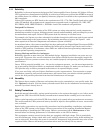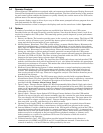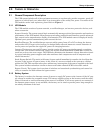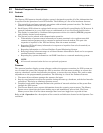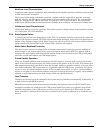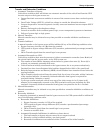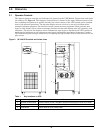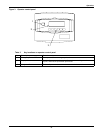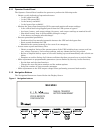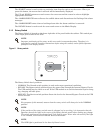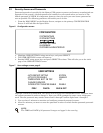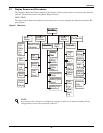
Theory of Operation
12
Nonlinear Load Characteristics
Computers and computer equipment with switching power supplies generate nonlinear currents rich
in fifth and seventh harmonics.
The inverter pulse-width-modulated waveform, coupled with the output filter, provides a natural
path for reducing the fifth and seventh harmonic currents produced by the load. The inverter/filter
limits the output voltage THD to less than 3% with up to 100% typical electronic data processing
(EDP) loads. EDP equipment characteristically includes both nonlinear and linear load components.
Unbalanced Load Characteristics
Unbalanced loads are actively regulated. The phase-to-phase voltage balance is maintained to within
2%, even with a 50% load imbalance.
2.2.5 Static Bypass Switch
A static bypass switch is an integral part of the UPS. An automatic transfer control circuit senses the
status of the operator controls, UPS logic signals and alarm messages, and critical bus operating con-
ditions. If the inverter output can no longer supply the critical load, the static bypass switch automat-
ically transfers the critical load to the bypass source without interruption.
Static Switch Backfeed Protection
The static bypass system is equipped with redundant disconnect circuits that prevent backfeed of
lethal voltage to the bypass input in the event of a shorted static switch SCR. If a shorted SCR is
detected, the static bypass switch is isolated and an alarm is annunciated at the UPS control panel,
while the critical load remains on UPS output power.
Pulsed Parallel Operation
When an overload condition such as magnetic inrush current or a branch load circuit fault exceeds
200% of the full-load current rating, the static bypass switch pulses on for 10 cycles. This allows up to
6000 amperes from the bypass line to clear the overload without a complete transfer to bypass (a Lie-
bert design exclusive). The bypass source is in parallel with the UPS system, permitting the bypass
source to carry the initial overload current. If the overload clears before 10 cycles, a load transfer to
bypass is not made. If the overload condition continues to exceed the inverter capacity, the automatic
transfer is made (maintaining the load voltage within the specified limits).
Load Transfers
Transfers to (transfer) or from (retransfer) the bypass may be performed automatically or manually in
a make-before-break (MBB) sequence.
Manual load transfers and retransfers are initiated by the Operator from the UPS Control Panel.
Automatic transfers are initiated by the UPS system control logic when an overload is beyond the
specified capabilities of the UPS inverter or when a fault occurs within the UPS module. An auto-
matic retransfer is initiated if this function is enabled and if system conditions for a retransfer are
present.



